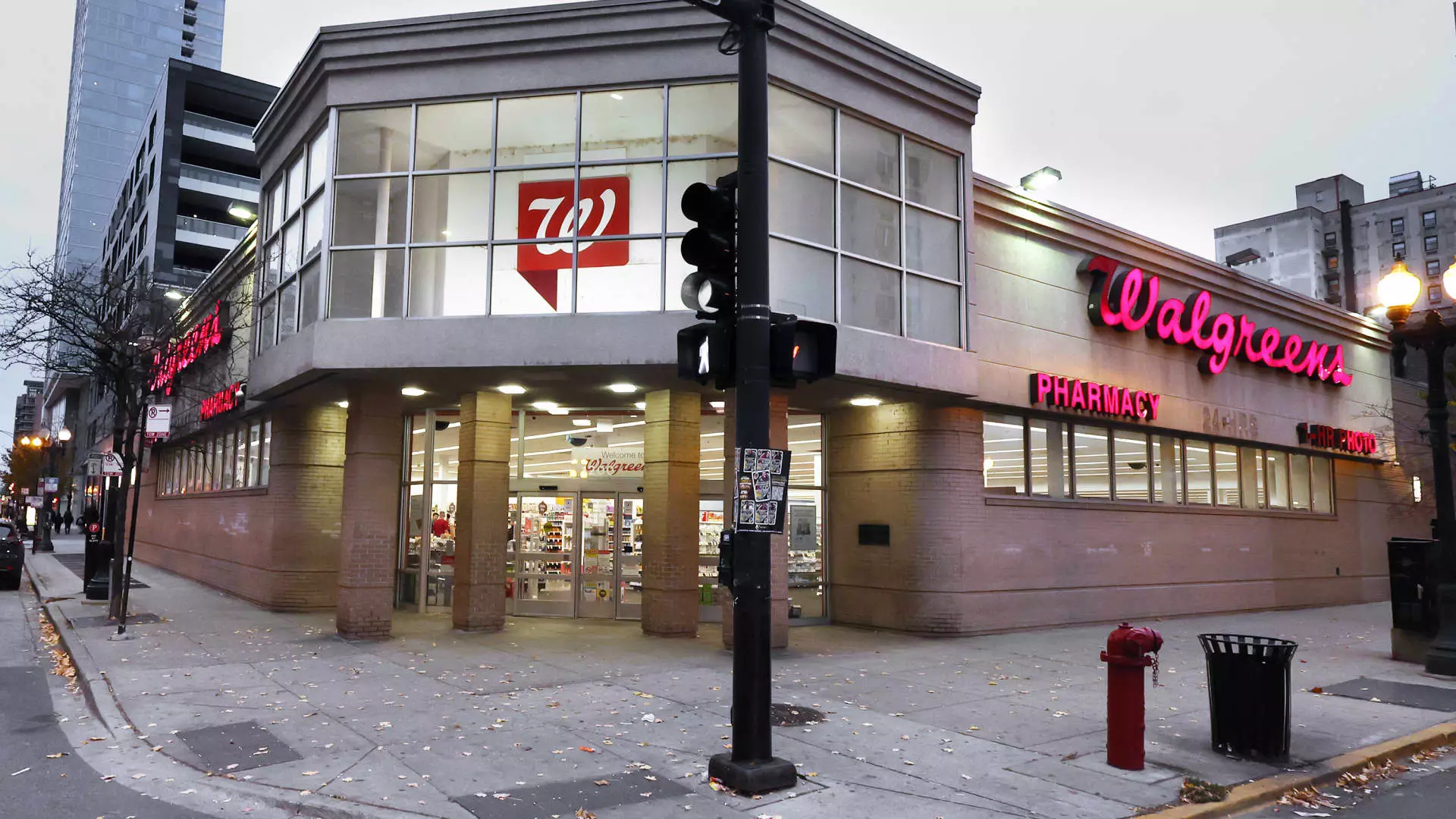In an era defined by aggressive mergers and acquisitions, Walgreens’ recent leap into the private sector, alongside Sycamore Partners in a staggering $10 billion deal, marks a significant pivot for the century-old retail drugstore empire. On one hand, the move could revive the company amidst fierce competition and financial instability; on the other, it raises questions about corporate responsibility, market dynamics, and consumer trust. The weight of history wreathed around Walgreens—founded in 1927—hints at a complicated legacy that continues to unfold as it prepares to leave the public spotlight.
Fiscal Turbulence and Corporate Challenges
Despite demonstrating an unexpected uptick in its second-quarter earnings, the company is still tethered to a slew of woes that could threaten its stability moving forward. The recent earnings report indicated a revenue increase to $38.59 billion, surpassing analyst expectations. Yet, one cannot ignore the glaring $2.85 billion net loss for the quarter—a harrowing figure that brings to light the company’s ongoing struggles against soaring operating costs and external pressures. The massive charge related to the diminished value of its retail pharmacy underscores the substantial challenges the company faces in adapting to a changing health care landscape.
The backdrop of Walgreens’ financial struggles is replete with legal challenges, specifically the opioid crisis, which has claimed a staggering $969 million in cash flow tied to settlements. Moreover, the ongoing disputes echo a larger truth: Walgreens’ foray into healthcare services has been rife with missteps. It raises a pertinent inquiry: at what cost is Walgreens attempting to navigate this tumultuous market?
Cost-Cutting Measures: A Double-Edged Sword
Cost-cutting measures, while providing short-term respite, often lead to detrimental long-term ramifications. Walgreens’ strategy—including shuttering locations—can be perceived as a desperate attempt to regain footing amidst fierce competition from CVS, Amazon, and various retail chains, but it could alienate loyal customers who have relied on their neighborhood pharmacies. The billed goal of streamlining operations might solve some financial headaches now, but it serves to undermine the accessibility and community aspect that have been the bedrock of Walgreens’ appeal.
Despite claims of improved performance against the backdrop of “disciplined cost management,” the critical sentiment prompts a necessary reflection on whether Walgreens is merely delaying the inevitable: an overhaul of its corporate ethos. The allusion to ongoing turnaround plans delivers optimism, yet one must consider the broader implications of privatization. In the face of mounting pressure from stakeholders to deliver results, will Walgreens sacrifice its commitment to healthcare integrity for expedient profit?
Healthcare Ventures and Strategic Investments
As Walgreens leans into the healthcare sector, its investment decisions reveal both ambition and miscalculation. The short-lived success in collaborations with companies like Cencora and BrightSpring hints at the potential for innovative growth, yet the underlying turbulence in their health sector endeavors poses risks as well. Would these speculative ventures reflect an earnest intention to embrace healthcare reform or simply signal opportunistic tendencies?
A focus on profit over purpose endangers the core values that consumers expect from their healthcare providers. It’s imperative for Walgreens to strike a balance between lucrative investment opportunities and the ethical responsibilities that come with being a major player in the pharmacy landscape. The skeptics would argue that the company’s hurried shift into healthcare might ultimately serve as a smokescreen to divert attention from its core failures in retail.
A Future in Uncertainty: What Lies Ahead?
The company’s indefinite withdrawal of fiscal guidance envelops Walgreens in a shroud of uncertainty, leaving employees, investors, and customers uncertain about what to expect. As it approaches closure on this monumental acquisition and goes private, the hope is that the restructuring will breathe new life into this beleaguered institution. However, the underlying challenges—the lingering opioid lawsuits, the grim reality of market competition, and the misaligned investments—add layers of complexity to an already chaotic situation.
Conclusively, the outcome of Walgreens’ strategic pivot will not just affect its bottom line. It will reverberate throughout the healthcare and retail landscapes, prompting other businesses to re-evaluate their operational strategies in light of changing consumer expectations and market demands. Walgreens stands at a crossroads: an ambitious gamble for survival or a perilous descent into irrelevance? Only time will tell whether this modern-day Goliath can meaningfully adapt to a landscape that waits for no one.

